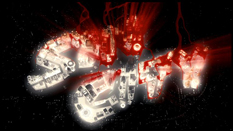CLASSIC .. sin city
Sin City is classic in that it has both character-specific and over-arching themes, employing an orchestra and many other classic musical elements to denote both the action and the emotions at play. It adds in some contemporary instrumentation to boot, blending the familiar with the new and unexpected, as any good film, especially a dystopic one, would do. Most interestingly though, to deal with its 3 separate plot lines, Sin City's music was written by 3 different composers.
"Robert Rodriguez already before filming started to write on the main theme of the film, but as time went by, he realised that he could not score Sin City entirely by himself. So he called in two composers he has worked with before: John Debney (Spy Kids) and Graeme Revell (From Dusk till Dawn) to compose the music for two of the three storylines, while Rodriguez would take care of the third storyline himself, as well as provide some overarching themes for the film as a whole. The collaboration seems to have been a close one, because even if the three parts are different in many ways, they are connected in the very dark character and a modern film noir feel - it is one score, not three, no doubt about it, and within it there is a lot to enjoy. With classic film noir elements such as saxophones and trumpets together with ordinary symphony orchestra accompaniment, as well as more modern elements such as electric guitar, bass and synths, a truly enchanting picture of the darkness of Sin City is painted before us. Indeed, this music is Sin City."
composers: Robert Rodriguez,
John Debney, and Graeme Revell
directed by Frank Miller,
Robert Rodriguez, and Quentin Tarantino
sample music
robert rodriguez - sin city
john debney - big fat kill
links:
Sin City on YouTube
CLASSIC
.. silent films
.. sin city
.. brazil
CONTRADICTION
.. night and fog
EVENT
.. akira
CHARACTER
.. blade runner
THE ADDED DIMENSION
.. a clockwork orange

